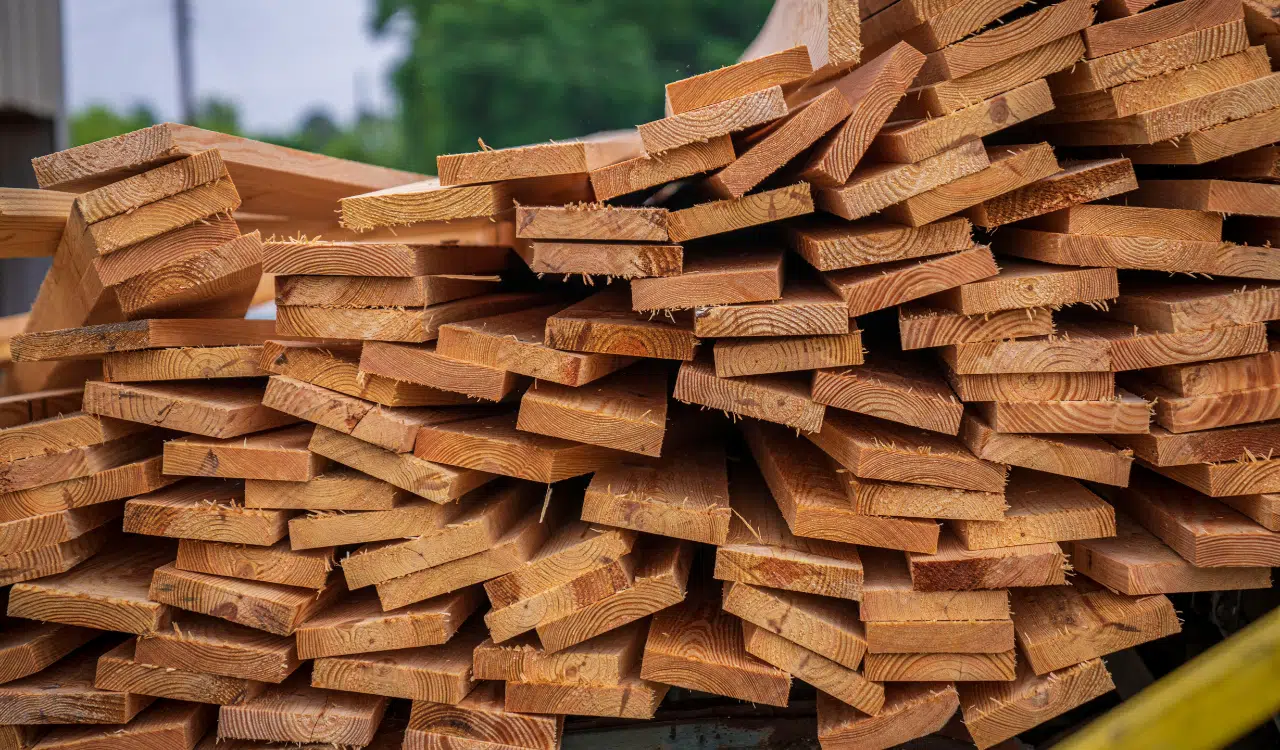To all the high-profile products caught up in the maelstrom of politically driven tariffs by the Trump administration, including computer chips, pharmaceuticals and automobiles, you can now add one more decidedly less exotic category: wood and its derivatives, including lumber used in construction, credenzas, other furniture, and kitchen cabinets. But here’s the thing: the new tariffs this month on imported lumber, furniture, and household cabinetry could end up having one of the biggest impacts on American consumers—and the retailers who sell them—more than any of the thousands of other duties announced since April.
Canadian lumber tariffs, started on October 14, are effectively 45 percent. On the retail front, the two home improvement giants, Home Depot and Lowe’s, clearly are going to get hit the hardest by these increased costs. But so too will flooring specialists like Floor & Décor and Lumber Liquidators, as well as the hundreds or thousands of independent lumber yards and sellers around the country.
Burning Wood
Compared to all the headline-grabbing tariffs that have been instituted by the president, those on wood and furniture seem to be unlikely candidates for breaking news. The National Association of Home Builders (after all, most wood is used in residential construction these days) estimates that the U.S. imports about a third of all the lumber it uses. The vast majority of those imports—85 percent according to the NAHB—comes from Canada. Curiously, the association says that U.S. sawmills are operating at only about 65 percent of their capacity and there is plenty more lumber that could be harvested in an “environmentally responsible” manner domestically, in addition to what could be imported from Canada and elsewhere—if the duties were not so onerous.
How onerous? The trade group said this latest 10 percent duty comes on top of existing rates of 35 percent, up from just 14.5 percent. That means that Canadian lumber tariffs, started on October 14, are 45 percent. On the retail front, the two home improvement giants, Home Depot and Lowe’s, clearly are going to get hit the hardest by these increased costs. But so too will flooring specialists like Floor & Décor and Lumber Liquidators, as well as the hundreds or thousands of independent lumber yards and sellers around the country.
The biggest losers obviously, will be homeowners and would-be homeowners who are already trying to deal with a housing market with skyrocketing prices and limited supplies. “The housing market is not in a great place, to put it mildly,” Daryl Fairweather, chief economist for the online real estate broker Redfin, recently told The New York Times. “The direct impact is going to be worse for the economy,” Wayne Winegarden, an economist at the Pacific Research Institute, told The Times in the same report.
Furnishings’ Uncertain Future
While home building will be the biggest ticket item to get slammed, the wood that goes inside these homes will have the potential in the aggregate (flooring, cabinetry, upholstery) for the largest dollar impact. Some of that is directly due to the level of the tariffs. Upholstered furniture will immediately get a 25 percent duty that will then rise to 30 percent on January 1, 2026. Specifics have not been unveiled for non-upholstered furniture (the industry calls them case goods), like dining and bedroom furniture. But realistically, they could follow similar lines. Tariffs on kitchen cabinets and vanities are getting an immediate 25 percent duty that will double on January 1, 2026.
It’s not quite clear how these rates will relate to any existing tariffs that were put into effect on country-wide orders earlier this year, including 35 percent for China, 20 percent for Vietnam, the two biggest furniture resources. The tariffs also affect lower, but still hefty rates, for countries like Indonesia, Taiwan and members of the European Union. And if a product has any steel or metal in it, tack another 50 percent on top of all those duties. Frankly, there are so many conflicting and overlapping rates being mandated that it will take squadrons of sourcing agents to figure it all out.
The backstories are somewhat complex. Almost 90 percent of all case goods are imported, and about two-thirds of upholstery also comes from outside the country. But even domestically made products use imported components like upholstery fabrics for sofas and chairs, hardware and inner pieces for case goods—and even paints, stains and finishes that are often made in Asian countries with, shall we say, somewhat lax environmental regulations.
Hard numbers on cabinetry are not as readily available, but it is believed the majority of these products come from overseas, again often using components supplied by Asian resources. In a new study from the National Kitchen & Bath Association, “more than half of the kitchen and bath industry professionals surveyed said that tariffs will constrain revenue growth over the next six months.”
If You Have to Ask Why…
As the president has said about tech, automotive and other goods, these wood imports “threaten to impair the national security” of the United States, using Commerce Department statute Section 232. Needless to say, many on the other side of this argument don’t agree, and his authority is now being questioned before the Supreme Court, which is expected to rule before the end of the year.
The “national security” hook would seem to be a tough one to hang this all on, given that bathroom vanities and ottomans rarely are used in the defense of the country. Still, stranger things have happened, and are happening, in judicial rulings these days. In the meantime, home builders, furniture producers, lumber mills and all the companies up and down the retail lumber chain have been thrown into chaos…once again…about the last thing the weak marketplace needs right now. People in the business are talking right now, and chances are they are screaming just one word: “Timber.”





